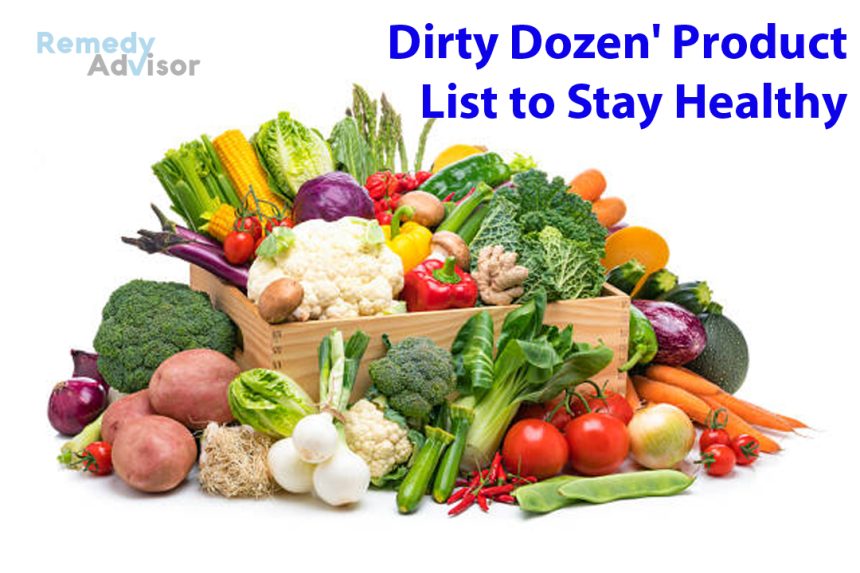If you can’t afford to buy all organic product, you can still limit your exposure to harmful pesticides by only buying organically grown produce from the list of the most contaminated foods. But it’s important to keep in mind that this choice won’t solve the problem of farmworkers getting cancer and other diseases because they are more likely to be exposed to pesticides.
The Environmental Working Group is a non-profit organization that does research. Every so often, it puts out a report on the health risks that come from pesticides in food. Based on what they found, avoiding the twelve conventionally grown fruits and vegetables that have the most pesticides can cut your exposure to pesticides by almost 90%. When a person eats the twelve items with the most pesticides, they are exposed to about fourteen pesticides per day. When they eat the twelve items with the least pesticides, they are exposed to less than two pesticides per day. Every year, the list of the most contaminated items changes.
The Dirty Dozen Lists (as of 2011)
- Apples: Like peaches, apples are usually grown with the help of pesticides to get rid of fungi, insects, and other pests. Research has found that apples have residues of 42 different pesticides, which cannot be completely removed by scrubbing or peeling because they are in the whole apple.
- Celery: Because celery doesn’t have a protective layer, it’s very hard to get rid of the 64 chemicals that are used on crops.
- Strawberries: If you buy strawberries out of season, they are probably brought in from countries with less strict rules about pesticides. Testing for pesticide residues has shown that there are fifty-nine pesticides on strawberries.
- Peaches: In traditional orchards, the soft skin of peaches is often treated with up to 62 different pesticides.
- Spinach: Spinach is one of the green leafy vegetables that is most likely to have pesticides on it. It could have up to 48 different pesticides on it.
- Nectarines: Imported nectarines have been found to have thirty-three different kinds of pesticides on them. This makes them, along with apples and peaches, some of the most contaminated tree fruits.
- Grapes: Imported grapes, especially, are more likely to be contaminated than grapes grown in the United States. This is because vineyards may use different pesticides at different stages of grape growth, and because grapes have thin skins that can’t be cleaned off by washing or peeling. Even wine, which is made from grapes, can have up to 34 different kinds of pesticides in it.
- Sweet bell peppers: The thin skins of sweet bell peppers don’t protect them very well from pesticides, and they are often sprayed with insecticides. Tests have shown that there are 49 different kinds of pesticides in sweet bell peppers.
- Potatoes: Commercially grown potatoes are some of the vegetables that have the most pesticides on them. The most common sprout inhibitor, chlorpropham (ClPC), is put right on potatoes to stop them from sprouting. One study on animals showed that CIPC can kill cells and change metabolism, which lowers the amount of ATP and potassium inside cells. Even after being washed and peeled, 81 percent of the potatoes that were tested still had pesticides on them. The Environmental Working Group found that potatoes have one of the highest pesticide counts of the 43 fruits and vegetables they looked at. This may make you think twice before ordering French fries.
- Blueberries: Blueberries grown in the United States are cured with up to 52 dissimilar insecticides, creating them one of the most contaminated berries on the market. A friend of mine stopped by the side of the road recently to pick some blueberries. A woman in the area told him that the berries would be sprayed in a few weeks before they could be picked. She said that when they sprayed the year before, all of her goldfish died, but she didn’t feel anything. Her idea is far from the truth, though, because these chemicals can hurt everyone.
- Lettuce: Lettuce has been found to have 51 different pesticides on it, including known or suspected carcinogens, hormone disruptors, neurotoxins, developmental or reproductive toxins, and toxins that hurt honeybees.
- Kale/collard greens: Kale and collard greens have been known for a long time to be hardy vegetables that rarely get pests or diseases. But tests done in 2010 showed that kale had a lot of pesticides left on it. In 2011, collard greens and kale were added to the list.
The Clean Fifteen Food List (as of 2011)
The “Clean Fifteen” is a list of 15 types of produce that contain almost no pesticides or none at all. This means they are safe to eat even if they are not organic.
- Eggplant
- Onions
- Grapefruit
- Domestic cantaloupe
- Pineapples
- Avocados
- Sweet corn
- Cabbage
- Asparagus
- Sweet peas
- Sweet potatoes
- Mangoes
- Eggplant
- Kiwi
- Watermelon
- Mushrooms







